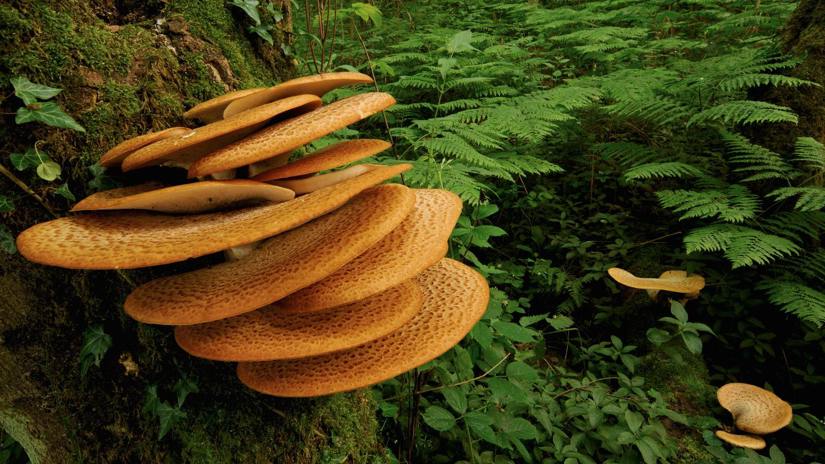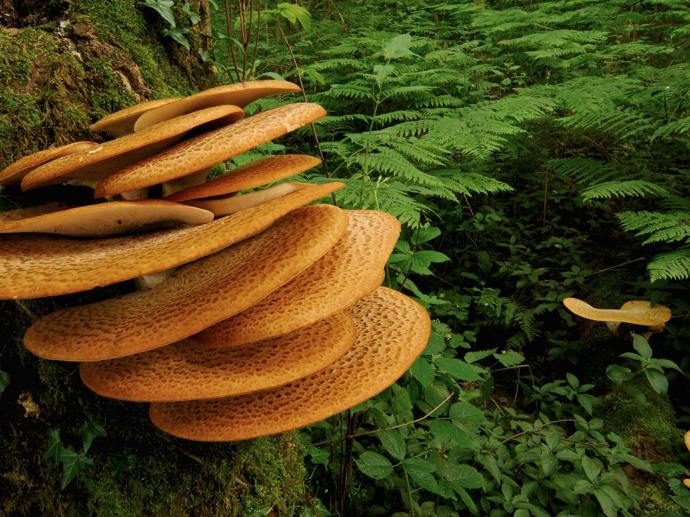Common names: porcelain fungus, poached egg fungus, slimy beech tuft
Scientific name: Oudemansiella mucida
Family: Physalacriaceae
Fruiting season: late summer to early winter
Habitat: dead beech trees, or dead branches on living beech trees
A glistening white, translucent beauty which fights off its rivals with its own fungicide. It is associated with beech trees and is edible – but only once the off-putting mucus is washed off.

Common names: porcelain fungus, poached egg fungus, slimy beech tuft
Scientific name: Oudemansiella mucida
Family: Physalacriaceae
Fruiting season: late summer to early winter
Habitat: dead beech trees, or dead branches on living beech trees
Porcelain fungus measures up to 8cm tall and 8cm across. It can smother dead beech trees while fending off its rivals.
Cap: a translucent white or ivory domed cap which flattens as it ages, developing an ochre flush in the centre. Covered with a mucous slime, very shiny in wet weather.
Gills/spores: underneath the cap, the gills are white. The spores are smooth, round and very thick-walled. Its spore print is white.
Stipe (stalk): the tough stem has a ring which looks like a neat white collar. It is able to curl over so the cap is turned upside down.

Credit: Arco Images Gmbh / Alamy Stock Photo
They are common and widespread in the UK and Ireland and throughout northern Europe where beech trees grow. They grow on tree trunks and fallen branches of dead beech trees, or on dead branches on living beech trees, often high up, in large tufts.
On breezy autumn days you may see what look like tiny parachutes falling from beech trees after the fungi have been dislodged by the wind.
Flies have been known to lay their eggs on porcelain fungus. This fungus is also involved in nutrient cycling.

Credit: Blickwinkel / Alamy Stock Photo
It can completely take over a dead tree, and fights off rival fungi with its own powerful fungicide. Studies in the 1980s led to the creation of a safe and effective group of agricultural fungicides called 'the strobilurins', which have improved yields of wheat and fruit crops by protecting them from powdery mildew attacks. Edible once the slime is washed off and the stem removed, it is said to have a good, rich flavour. It should be cooked before consumption.

When porcelain fungi grow underneath a fallen tree trunk or branch their stems curl over so the caps face inwards and their gills face outwards.


Amy Lewis • 21 Oct 2021
Bracket fungi, also known as shelf or polypore fungi, grow on both dead and living trees. Here we list some of the UK's more common and easily distinguished types to get to grips with.